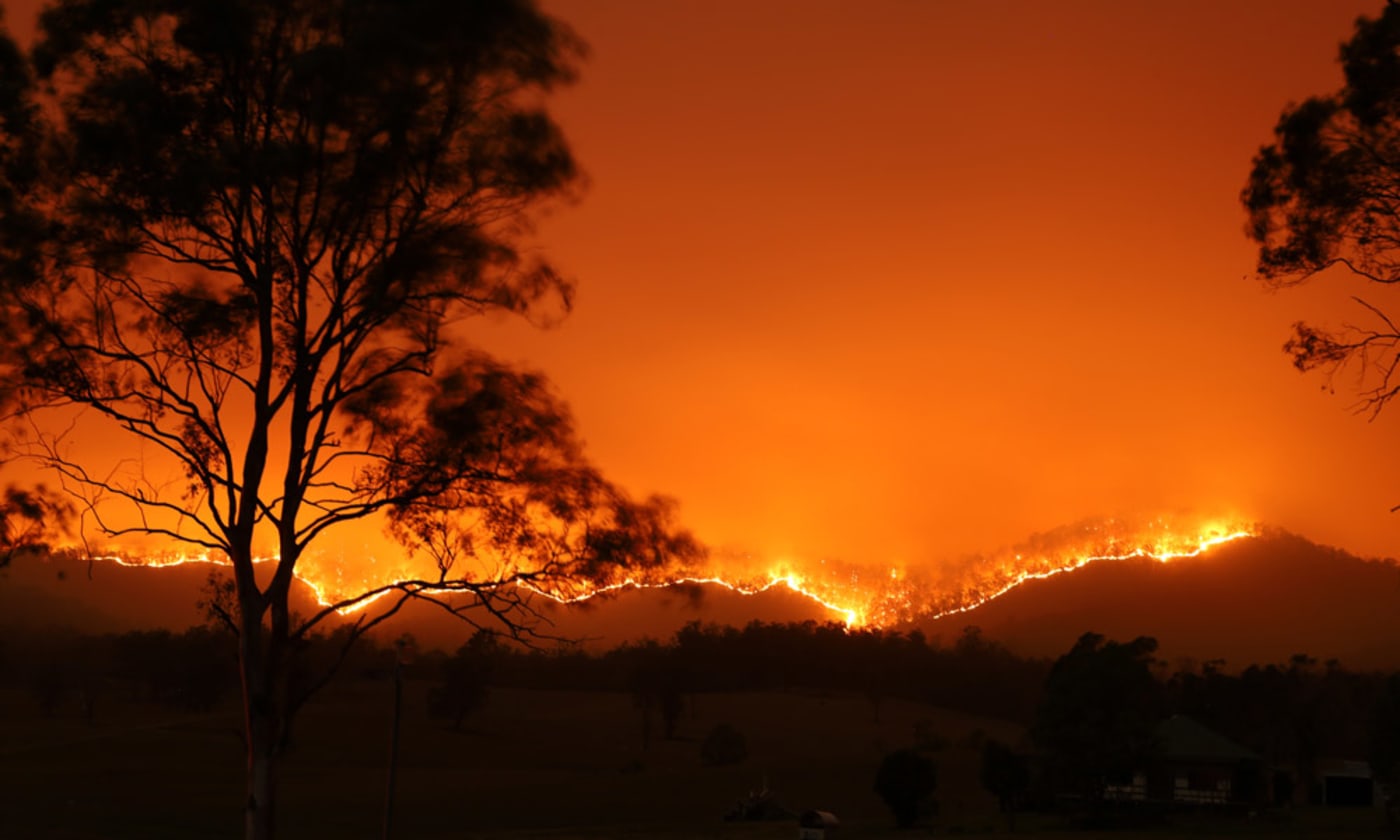Specialist Suggestions on Bushfire Monitoring for Enhanced Fire Protection
In the realm of bushfire monitoring, the importance of professional recommendations can not be overemphasized. From comprehending the subtleties of bushfire behavior to carrying out sensible actions such as firebreaks and defensible areas, there exists a wealth of expertise that can substantially boost fire security initiatives.
Recognizing Bushfire Actions
To successfully minimize the influence and handle of bushfires, it is crucial to have a comprehensive understanding of bushfire behavior. Bushfires are complex all-natural phenomena affected by various aspects such as climate condition, topography, gas lots, and human tasks. Understanding how these components engage is critical in forecasting the behavior of a bushfire, enabling for far better preparation and feedback strategies.
One trick aspect of bushfire habits is fire spread. This encompasses the rate at which a fire advances, the instructions it takes, and the intensity of the flames. By studying past fire events and examining fire patterns, specialists can anticipate how a bushfire might advance under particular problems. BMP. This knowledge is important in creating evacuation plans, alloting firefighting sources efficiently, and implementing hazard decrease procedures.
Furthermore, comprehending ember strike, spotting, and fire whirls is necessary in comprehending the complete degree of bushfire behavior. By delving into these ins and outs of bushfire behavior, authorities can boost their preparedness and reaction abilities, eventually decreasing the effect of these damaging occasions.
Implementing Firebreaks and Defensible Areas
Recognizing bushfire behavior is foundational for effectively applying firebreaks and creating defensible areas to improve fire defense. Preserving these firebreaks through regular clearing of particles and vegetation is essential to guarantee their efficiency throughout a bushfire event.

Correctly carrying out firebreaks and defensible spaces requires careful planning, regular upkeep, and community cooperation to ensure the highest level of fire protection for residential or commercial properties and lives in bushfire-prone locations.
Making Use Of Very Early Warning Solutions
Releasing advanced early warning systems is essential for timely detection and informing of prospective bushfire dangers. By utilizing innovative technologies such as satellite surveillance, climate sensors, and thermal imaging, authorities can properly spot and keep an eye on fire-prone areas ignition sources at the earliest stages. These systems can offer real-time data ablaze behavior, strength, and instructions, permitting for punctual decision-making and quick deployment of firefighting resources to the influenced locations.
Early warning systems also play a critical duty in notifying citizens and neighborhoods about putting in jeopardy bushfire risks. With automated alarms, text signals, telephone call, and social media sites notifications, individuals can be swiftly educated concerning emptying orders, secure sanctuary areas, and emergency procedures. This aggressive technique not just saves lives but likewise reduces residential property damage by guaranteeing that people have sufficient pop over to these guys time to leave and safeguard their homes.
Developing Discharge Strategies
Effective emptying plans are vital for making sure the safety of citizens in bushfire-prone areas. Creating well-thought-out discharge strategies is vital in reducing the threats presented by bushfires and guarding human life. These plans ought to be detailed, considering numerous factors such as the topography of the location, the density of plants, and the most likely rate and direction of the fire's spread.
When producing emptying strategies, it is important to establish clear discharge paths and setting up factors where homeowners can gather safely. These routes ought to be on a regular basis maintained to guarantee accessibility throughout emergency situations. In addition, communication techniques should remain in place to sharp locals of imminent threat and supply clear guidelines on evacuation treatments.
Cooperation between regional authorities, emergency solutions, and neighborhood members is crucial in developing effective discharge strategies. Regular drills and exercises ought to be conducted to acquaint locals with the procedures and guarantee a swift and arranged evacuation when a bushfire endangers the area. By focusing on the advancement of robust emptying strategies, areas can improve their resilience to bushfire emergency situations and reduce the prospective influence on lives and residential or commercial properties

Involving in Community Readiness
In the world of bushfire monitoring, fostering area preparedness plays an essential function in strengthening the strength of citizens staying in risky areas. Taking part in area preparedness entails informing locals on bushfire dangers, promoting fire safety and security methods, and creating emergency situation strategies jointly. By actively involving the area in readiness efforts, individuals come to be extra informed and empowered to take positive actions to go now protect their lives and buildings during bushfire events.
Neighborhood preparedness initiatives usually consist of performing fire drills, establishing interaction networks, and arranging training sessions on fire suppression methods. In addition, encouraging collaboration among neighbors to develop a cohesive support system can significantly enhance the total preparedness degree of a community. When citizens are knowledgeable and furnished to respond efficiently to bushfires, the chance of lessening damages and making certain safety and security boosts considerably.
Conclusion
In conclusion, reliable bushfire administration calls for a detailed understanding blog here of fire behavior, the implementation of firebreaks and defensible areas, the usage of early caution systems, the development of emptying strategies, and area involvement in readiness initiatives. By including these techniques, areas can improve their fire protection measures and decrease the impact of bushfires on both residential or commercial property and lives. BAL Report. It is critical for all stakeholders to interact to produce a much safer environment despite this all-natural disaster
To successfully manage and alleviate the influence of bushfires, it is imperative to have a thorough understanding of bushfire actions. By researching previous fire occurrences and examining fire patterns, professionals can prepare for exactly how a bushfire could proceed under certain conditions.Comprehending bushfire actions is foundational for effectively applying firebreaks and producing defensible spaces to improve fire protection. Engaging in community readiness involves enlightening citizens on bushfire risks, promoting fire security practices, and creating emergency situation strategies jointly.In conclusion, efficient bushfire administration needs a detailed understanding of fire habits, the implementation of firebreaks and defensible rooms, the application of early caution systems, the development of discharge strategies, and area involvement in readiness initiatives.